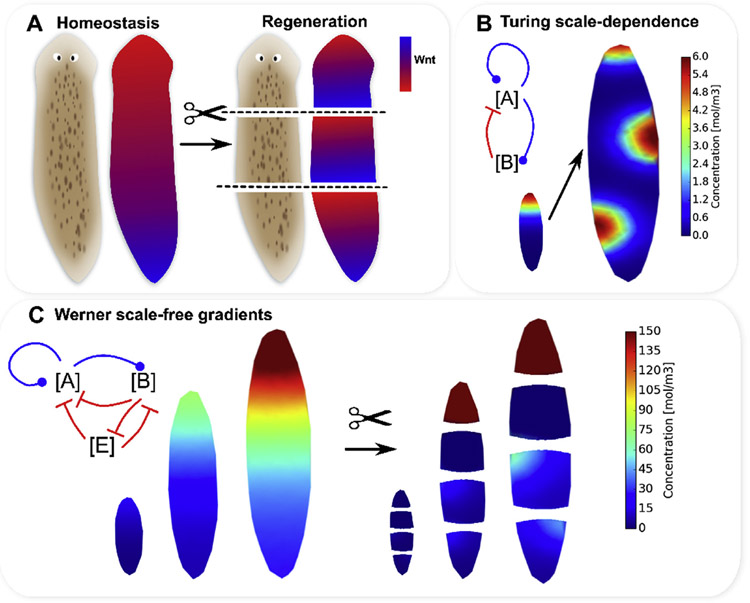Fig. 5.
The experimentally-observed, emergent, scale-free morphogen gradients of Notum, Wnt and ERK observed in planaria homeostasis and regeneration, are difficult to describe using standard reaction-diffusion mechanism due to their dependence on system size. In homeostasis, planaria show gradients with high Wnt1 at the posterior (A), and high Notum at the anterior. Cutting across the anterior-posterior axis leads to reformation of gradients of Wnt1, Notum and ERK which have the original anterior-posterior polarity in each cut fragment (A). Reaction-diffusion mechanisms can describe emergent gradients, but are limited by their dependence on system size, which leads to fundamentally different patterns as the size of the tissue is increased (B). An elegant reaction-diffusion scheme introduced by Werner et al. (2015) produces stable, emergent gradients for various system sizes, but with the limitations of strong dependence of absolute concentration magnitude on system size and imperfect gradients in 2D for shapes that are imperfect long ellipses, which arise naturally with cutting (C).

